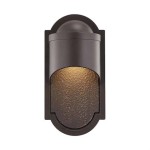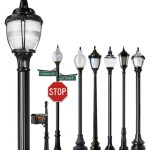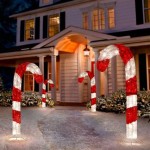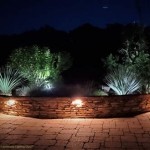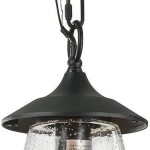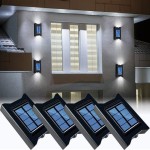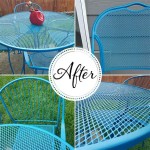The Cost to Run Outdoor Lighting
Outdoor lighting is an investment that can enhance the aesthetics of your home, improve security, and extend the usability of your outdoor spaces. However, understanding the associated costs is crucial for making informed decisions. This article provides an in-depth look at the factors influencing outdoor lighting costs, covering the initial installation, energy consumption, and maintenance expenditures.
Initial Installation Costs
The initial cost of installing outdoor lighting is determined by several factors, including the type of fixtures chosen, the complexity of the installation, and the materials required.
Fixture Type:
Outdoor lighting fixtures come in a wide range of styles, materials, and functionalities. Some popular choices include:-
Floodlights:
These are powerful lights often used for security purposes or to illuminate large areas. They are typically more affordable than other options. -
Path lights:
Designed to illuminate walkways and paths, these fixtures offer a soft, ambient glow. They can be made from various materials, such as metal, wood, or stone. -
Landscape lights:
These fixtures are used to highlight specific features in your landscaping, such as trees, flowers, or sculptures. They come in various sizes and styles, including spotlights, uplights, and downlights. -
String lights:
These decorative lights are a popular choice for creating a festive atmosphere and adding ambiance to outdoor spaces. They are available in various styles, including fairy lights, globe lights, and bistro lights.
Installation Complexity:
The complexity of the installation process can significantly impact the cost. Simple installations, such as installing a single fixture or string lights, are relatively inexpensive. However, more complex projects, such as installing multiple fixtures, running underground wiring, or integrating smart lighting systems, require more labor and expertise, increasing the overall cost.Materials:
The type of materials used for the installation also influences the cost. For example, using durable materials like copper wiring and high-quality fixtures will result in higher costs upfront but may offer longer life spans and greater energy efficiency.Energy Consumption and Costs
Outdoor lighting can significantly contribute to your energy bills. The energy consumption of your outdoor lighting depends on the type of bulbs used, the number of fixtures, and the number of hours they are operational.
Bulb Type:
There are several bulb types available for outdoor lighting, each with different energy consumption levels. For example:-
Incandescent bulbs:
These traditional bulbs are relatively inexpensive to purchase but consume high amounts of energy and have a short lifespan. -
Halogen bulbs:
Halogen bulbs offer brighter light and longer lifespans than incandescent bulbs but still consume a considerable amount of energy. -
Fluorescent bulbs:
These bulbs are more energy-efficient than incandescent and halogen options but may not be suitable for all applications. They can be more expensive to purchase but last longer. -
LED bulbs:
LED bulbs are the most energy-efficient option available. They consume significantly less energy than other bulb types, last much longer, and offer a wide range of colors and brightness levels.
Number of Fixtures and Operating Hours:
The number of fixtures you have installed and the number of hours they are operational directly influence your energy consumption. The more fixtures you have and the longer they are on, the higher your energy costs will be. Consider using timers or motion sensors to control your outdoor lighting and reduce energy consumption.Energy Rates:
Energy rates vary depending on your location and the time of year. Higher energy rates will result in higher electricity costs for your outdoor lighting.Maintenance Costs
Outdoor lighting fixtures require regular maintenance to ensure they are functioning properly and providing optimal lighting. Maintenance costs are influenced by the age of your fixtures, the quality of materials used, and the environmental conditions they are exposed to.
Regular Maintenance:
Regular maintenance includes replacing bulbs, cleaning fixtures, and inspecting wiring. This can be done by homeowners or by hiring a professional electrician. The frequency of maintenance depends on the bulb type, the environmental conditions, and the usage of your fixtures.Repair Costs:
Damaged or malfunctioning fixtures may require repairs. Repair costs can range from minor repairs like replacing a broken bulb to more significant repairs like replacing damaged wiring or faulty fixtures.Replacement Costs:
Outdoor lighting fixtures, like any other equipment, have a limited lifespan. Eventually, they will need to be replaced. The cost of replacing fixtures depends on the type of fixtures, the quality of materials, and the size of the project.By understanding the factors influencing the cost to run outdoor lighting, you can make informed decisions about your lighting choices, reducing your energy bills and minimizing maintenance costs while enhancing the beauty and functionality of your outdoor spaces.

How Much Does It Cost To Run Outdoor Lighting Perspectives

Do Outdoor Lights Use A Lot Of Electricity Our Cost Calculator Festive Knowledge Centre

Do Outdoor Lights Use A Lot Of Electricity Our Cost Calculator Festive Knowledge Centre

The 3 Best Smart Outdoor Lights For Backyards Of 2024 Reviews By Wirecutter

Electrician Cost To Install Outdoor Light How Budget

How Much Is Installing Low Voltage Landscape Lighting

Electrician Cost To Install Outdoor Light How Budget

How Much Do Led Lights Cost To Run In 2024 Checkatrade

Led Lights Running Costs

5 Best Outdoor Solar Lights Of 2024 Reviewed
Related Posts
